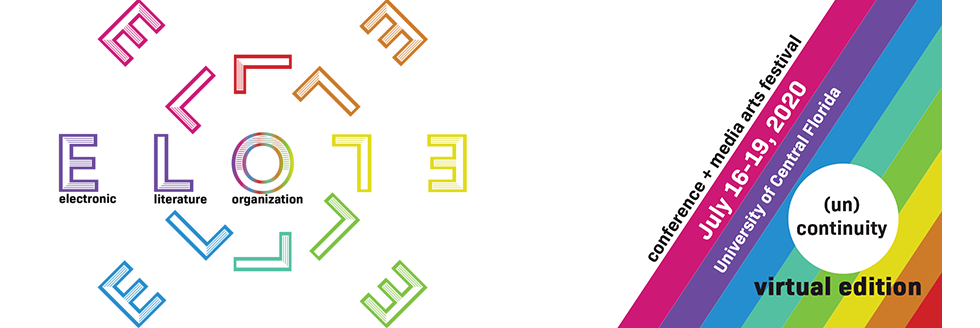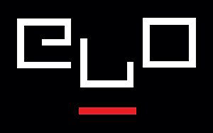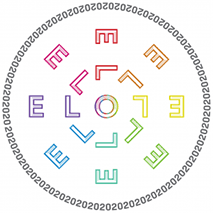Loading...
Submission Type
Conference Talk - Individual
Abstract
Digital comics are a medium distinct from print comics, just as electronic literature is a medium distinct from print literature. Given that “comics” as a form have such a well defined identity in popular culture, their digital cousins tend to be seen as “comics+” instead of as a separate medium worthy of aesthetic exploration and scholarly research. This talk aims to disrupt that conflation, while simultaneously providing a springboard for both researchers and practitioners interested in entering the field.
Comics studies has seen its share of definition battles, with researchers and practitioners alike contesting how best to advance analysis of the medium. This talk will build upon Daniel Merlin Goodbrey’s “seven key characteristics” of comics, identified in his thesis “The Impact of Digital Mediation and Hybridisation on the Form of Comics.” Using these key characteristics as a starting point, I will lead attendees on a whirlwind tour through precedents in cinema, video games, and other forms, showing how aesthetic practices in other media have laid the groundwork for digital comics as they exist today.
Goodbrey’s seven practices are presented not as an exhaustive or exclusionary definition, but as a collection of phenomena exhibited in various degrees by artifacts which may be called “comics.” Applying that same approach to digital comics yields a clearer understanding of the aesthetic territory the medium has at its disposal. In particular, my talk will explore how comics’ conversion of time into space can be reverse-engineered in the digital realm into a practice I call “timeframing”; how the reader’s control of pacing in traditional comics is complicated and expanded through the addition of explicitly temporal elements; and how the tablodic imagery of comics leads to the development of interactive “layout machines” which enact logic that was previously implicit in print.
Attendees will come away with an understanding of key formal and aesthetic concerns in digital comics, as well as a rough sketch of the history of the form suitable for both researchers and practitioners to build upon.
Temporal Aesthetics in Digital Comics: An Introduction for Makers and Researchers
Digital comics are a medium distinct from print comics, just as electronic literature is a medium distinct from print literature. Given that “comics” as a form have such a well defined identity in popular culture, their digital cousins tend to be seen as “comics+” instead of as a separate medium worthy of aesthetic exploration and scholarly research. This talk aims to disrupt that conflation, while simultaneously providing a springboard for both researchers and practitioners interested in entering the field.
Comics studies has seen its share of definition battles, with researchers and practitioners alike contesting how best to advance analysis of the medium. This talk will build upon Daniel Merlin Goodbrey’s “seven key characteristics” of comics, identified in his thesis “The Impact of Digital Mediation and Hybridisation on the Form of Comics.” Using these key characteristics as a starting point, I will lead attendees on a whirlwind tour through precedents in cinema, video games, and other forms, showing how aesthetic practices in other media have laid the groundwork for digital comics as they exist today.
Goodbrey’s seven practices are presented not as an exhaustive or exclusionary definition, but as a collection of phenomena exhibited in various degrees by artifacts which may be called “comics.” Applying that same approach to digital comics yields a clearer understanding of the aesthetic territory the medium has at its disposal. In particular, my talk will explore how comics’ conversion of time into space can be reverse-engineered in the digital realm into a practice I call “timeframing”; how the reader’s control of pacing in traditional comics is complicated and expanded through the addition of explicitly temporal elements; and how the tablodic imagery of comics leads to the development of interactive “layout machines” which enact logic that was previously implicit in print.
Attendees will come away with an understanding of key formal and aesthetic concerns in digital comics, as well as a rough sketch of the history of the form suitable for both researchers and practitioners to build upon.




Bio
Erik Loyer’s web and mobile works explore social justice and spirituality while combining elements of comics, video games, and interactive music. His work has received international recognition in the digital humanities, electronic literature, games, and digital comics fields. Informed by an ethos of instrument-making, Loyer’s practice frequently includes the development of creative tools for use both by his collaborators and the general public. Loyer founded the mobile digital storytelling label Opertoon in 2008, creating and publishing the interracial love story Ruben & Lullaby, the touchscreen meditation Strange Rain, and the digital graphic novel Upgrade Soul. Loyer has created cultural software applications for a variety of clients across the United States including the Martin Luther King, Jr. Research and Education Institute and the Smithsonian Institution, and is the Creative Director of the Alliance for Networking Visual Culture, where he leads the design of the scholarly publishing platform Scalar. He is also co-founder and Chief Experience Officer of TunesMap, a media company that delivers cultural context around streaming music. A two-time Webby Awards Official Honoree, Loyer’s work has been commissioned by the Whitney Museum of American Art, the Museum of Contemporary Art, Los Angeles, and the San Francisco Museum of Modern Art.